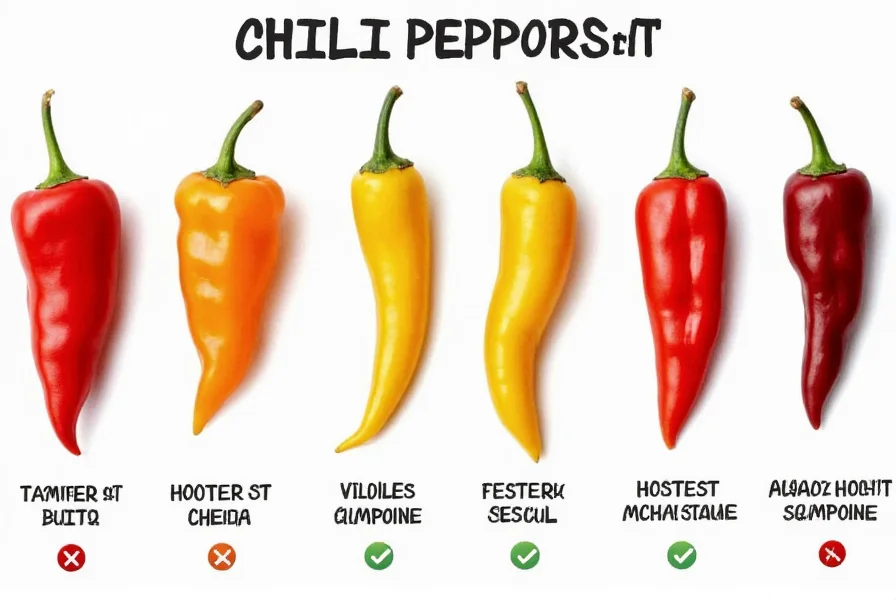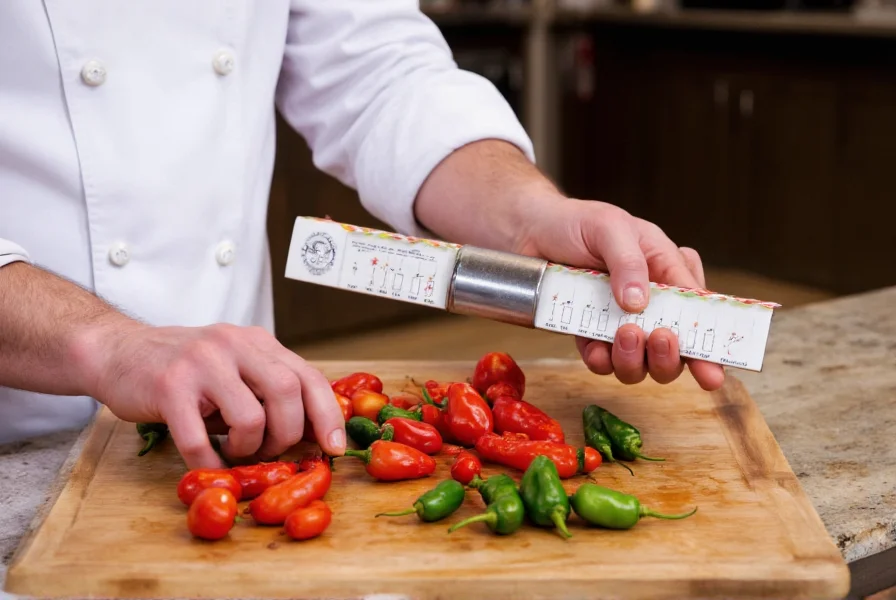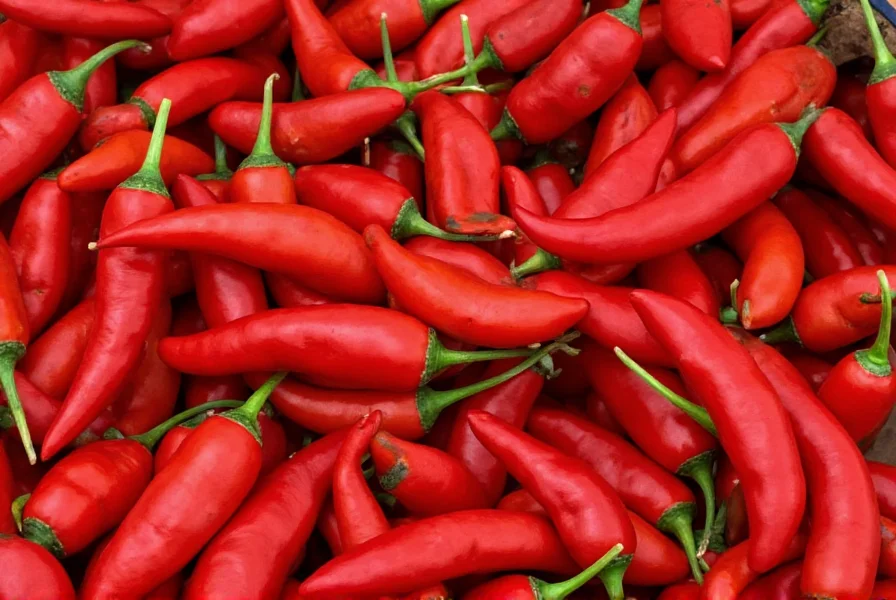Understanding chili pepper heat levels is essential for both culinary enthusiasts and casual cooks. The Scoville scale remains the standard measurement system for quantifying capsaicin concentration—the compound responsible for that fiery sensation in your mouth. This comprehensive guide explains how the scale works, where common peppers fall on the spectrum, and what these measurements mean in practical terms.
The Origins of the Scoville Heat Measurement System
Developed in 1912 by American pharmacist Wilbur Scoville, the original Scoville Organoleptic Test involved diluting chili extract in sugar water until the heat became undetectable to a panel of tasters. The degree of dilution determined the Scoville rating—a 10,000 SHU pepper required 10,000 parts of sugar water to neutralize its heat. While modern high-performance liquid chromatography (HPLC) now provides more precise measurements, the Scoville scale remains the consumer-friendly reference standard.
How Modern Scoville Measurements Work
Today's Scoville ratings derive from laboratory analysis using HPLC, which measures capsaicinoid concentration in parts per million. These measurements convert to Scoville Heat Units using a standardized formula: 1 part per million capsaicin equals approximately 15-16 SHU. This scientific approach eliminates human subjectivity while maintaining compatibility with the original scale that consumers understand.
| Pepper Variety | Scoville Heat Units (SHU) | Heat Level Description |
|---|---|---|
| Bell Pepper | 0 SHU | No heat |
| Jalapeño | 2,500-8,000 SHU | Moderate heat |
| Habanero | 100,000-350,000 SHU | Very hot |
| Ghost Pepper (Bhut Jolokia) | 800,000-1,041,427 SHU | Extremely hot |
| Carolina Reaper | 1,400,000-2,200,000 SHU | World's hottest (edible) |
Practical Implications of Scoville Ratings
When selecting peppers for cooking, understanding Scoville heat units helps prevent culinary disasters. A single Carolina Reaper contains approximately 275 times more capsaicin than a typical jalapeño. Professional chefs often use the rule of thumb that each Scoville tier represents a tenfold increase in heat intensity. This knowledge proves invaluable when substituting peppers in recipes or creating balanced flavor profiles.

Factors Affecting Pepper Heat Variability
Several elements influence where a specific pepper falls on the Scoville heat scale:
- Growing conditions: Soil composition, climate, and water stress significantly impact capsaicin production
- Plant genetics: Even within varieties, heat levels can vary between individual plants
- Ripeness: Fully mature peppers typically develop higher heat levels
- Part of the pepper: The placenta (white ribs) contains the highest concentration of capsaicin
Limitations of the Scoville Scale for Modern Applications
While the Scoville scale provides valuable consumer reference points, it has several limitations. The original testing method relied on human taste panels, introducing significant subjectivity. Modern HPLC measurements offer greater precision but still convert results to Scoville units for public understanding. Additionally, the scale doesn't account for how different capsaicinoids affect heat perception—some compounds create immediate burn while others produce delayed, longer-lasting heat.
Using Scoville Knowledge in Everyday Cooking
Practical application of Scoville scale knowledge transforms cooking experiences. When substituting peppers, consider both heat level and flavor profile. For example, while both habaneros and Scotch bonnets register similarly on the Scoville scale (100,000-350,000 SHU), their flavor profiles differ significantly. Understanding these nuances helps create balanced dishes without overwhelming heat. Remember that cooking methods also affect perceived heat—roasting can mellow peppers while drying concentrates capsaicin.

Common Misconceptions About Pepper Heat Measurement
Several myths persist about the Scoville scale and pepper heat. Contrary to popular belief, the seeds themselves don't contain significant capsaicin—the highest concentration exists in the white pith surrounding the seeds. Additionally, milk effectively neutralizes capsaicin because casein binds to the oil-based compound, while water merely spreads it. Understanding these facts helps manage heat exposure during food preparation and consumption.
Frequently Asked Questions
What is the highest possible Scoville rating?
Pure capsaicin measures approximately 16 million Scoville Heat Units, representing the theoretical maximum for natural capsaicinoids. The hottest naturally occurring peppers, like the Carolina Reaper, typically range between 1.4-2.2 million SHU.
Why do Scoville ratings for the same pepper vary so much?
Pepper heat levels fluctuate due to growing conditions, soil composition, climate, and even the specific plant. A jalapeño might measure 2,500 SHU in ideal conditions but reach 8,000 SHU when stressed by drought or temperature extremes.
How can I safely handle extremely hot peppers?
Always wear gloves when handling high-Scoville peppers like habaneros or ghost peppers. Avoid touching your face, especially eyes. Work in well-ventilated areas as capsaicin vapors can cause respiratory irritation. After handling, wash hands thoroughly with soap and water.
Does cooking affect a pepper's Scoville rating?
Cooking doesn't change the actual Scoville rating (capsaicin concentration), but it does affect perceived heat. Roasting can mellow flavors while drying concentrates heat. Adding dairy products like yogurt or cheese creates a cooling effect by binding to capsaicin molecules.
What's the difference between Scoville units and ASTA pungency units?
ASTA pungency units measure capsaicinoid concentration through colorimetry, while Scoville units represent perceived heat. The conversion is approximately 15-16 Scoville units per ASTA unit. Food manufacturers often use ASTA measurements for quality control, while consumers rely on Scoville ratings.











 浙公网安备
33010002000092号
浙公网安备
33010002000092号 浙B2-20120091-4
浙B2-20120091-4